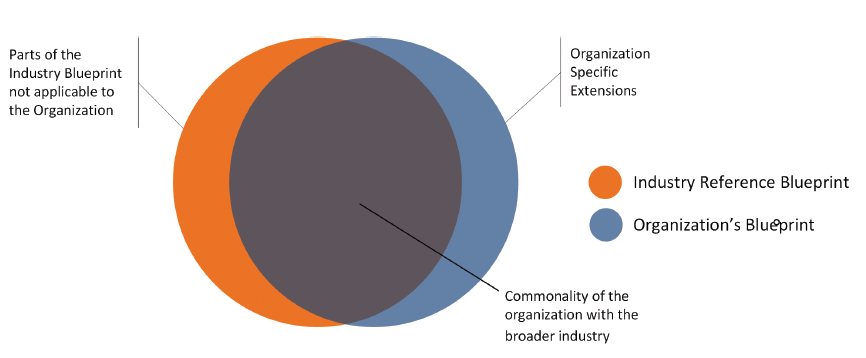By Aman Aggarwal CPCU, PMP, SCEA, TOGAF, ACE, EA, MSc
A lot has been written in various forums and posts about how enterprise architecture seems to fail in delivering the promised value across many organizations from a business perspective. Through these posts, two of the common sources of this problem become apparent:
-
Time it takes for the development of enterprise architecture; the time frames of such operations often wear out the organization’s patience.
-
The output typically ends up being limited to an IT perspective instead of comprehensively covering the organization (e.g. including business and strategic views), as required by stakeholders across the enterprise.
The good news is that solutions have emerged for the above challenges.
To solve these challenges, organizations like The Open Group, with the support of hundreds of member organizations around the world, have created methodologies like the TOGAF Architecture Development Method (ADM). The TOGAF ADM provides a time-proven process to produce business, information systems, technology, and implementation perspectives that stakeholders participating in the projects need. In order to ensure success, the ADM provides a phased approach with built-in validation steps to ensure that the right set of artifacts is produced at each stage of the architecture process.
However, the architects often end up reinventing the wheel when following such a process. For example, one can easily find architects assembling a list of business processes on a project-by-project basis, even though there is a significant overlap of processes across the projects. As a result, by the time the enterprise architects(EA) are done, the rest of the organization has already labeled the EA effort as a failure. Also, while reinventing the wheel, the enterprise architects often have to cut corners in order to save on cost and time, resulting in an architecture that lacks necessary levels of depth or breadth.
To fix this problem, the TOGAF ADM methodology recommends another concept called “The Architecture Continuum” which recommends using a progression of generalized to specialized architectures to facilitate reuse. The following diagram from TOGAF illustrates this concept:

The architecture continuum recommends creating organization-specific architecture by leveraging industry reference architectures as a base. This speeds up the architecture efforts of the organization and also provides the benefit of the knowledge vested in the industry architecture. Over time, multiple organizations contribute parts of their architectures back to the industry architectures, resulting in a continuous cycle of elaboration and reuse.
A critical dependency of this elaboration-reuse cycle is the availability of industry reference architectures, which is fulfilled by a number of robust, industry-specific reference architectures. The following is a listing of prominent contribution based industry architectures/models:
Insurance
- The IRBI – Industry Reference Blueprint for Insurance (Property and Casualty Edition)
- ACORD Framework – Association for Cooperative Operations Research and Development
- OMG – Object Management Group (P&C Model)
Banking & Mortgage
- BIAN - Banking Industry Architecture Network
- MISMO- Mortgage Industry Standards Maintenance Organization
Telecom
- eTOM – TMForum’s Enhanced Telecom Operations Map
Supply Chain
Government
- FEAF- Federal Enterprise Architecture Framework
- AGA Reference Model
Common
- NIEM Information Model – National Information Exchange Model
- OMG – Object Management Group
- APQC Process Model
Taking the example of the IRBI (Industry Reference Blueprint for Insurance); it closely aligns to the TOGAF ADM as well as the Zachman framework and provides the reference Business Model, Information Systems Model, and the Technology Model for the P&C Insurance industry. The Business Model of the IRBI covers 1000+ core business functions along with measures for goals, roles, location, events and information. Additionally, an Information Systems Model and a Technology Model provide a means to trace the business across the information systems and technology implementations.
Enterprise architects can adopt base models provided by such industry reference architectures to accelerate and enrich their organization-specific architectures. In practice, there is a large overlap between a single organization’s enterprise architecture versus industry architecture.

The use of industry architecture greatly simplifies the creation of enterprise architecture. However, this certainly does not eliminate the work for the enterprise architects. The task of customizing reference architecture to become organization-specific is a sizable one in any organization. This customization includes removing parts of industry architecture not applicable to the organization and adding any organization specific parts. For example, an organization that has totally outsourced claim handling may want to remove detailed parts of architecture dealing with claims handling capability, and will want to add architecture components that support outsourcing. Additionally, the terminology used in the reference architecture should be adapted to the organization’s jargon in order to facilitate understanding of the architecture by all organizational stakeholders.
The industry reference architectures referred above are just a small list, more and more of such reference architectures will become available in the time to come. As these industry architectures continue to mature on their own, organizations leveraging them would benefit even more to a point where their own architecture would be much more comprehensive than what is otherwise possible if done from scratch, leading to increased success rate of enterprise projects. While the reuse provided by these reference architectures will not solve every aspect of a successful architecture effort, it surely is a significant factor in the production of quality enterprise architecture.
------------------------------------------------------------------------------------
Disclaimer: The views are the author’s personal opinion and do not represent opinions of his employer or any other organization.
 |
Author Information: Aman Aggarwal CPCU, PMP, SCEA, TOGAF, ACE, EA, MSc
Aman Aggarwal is an insurance technology professional with nearly 20 years of experience with medium to large P&C carriers. He is also the author of the “Industry Reference Blueprint for Insurance”.
|